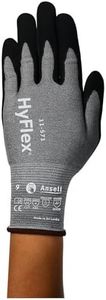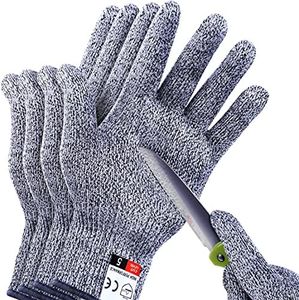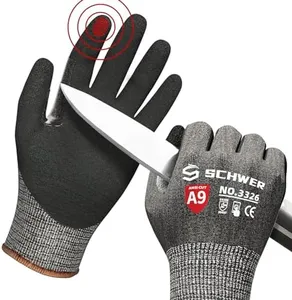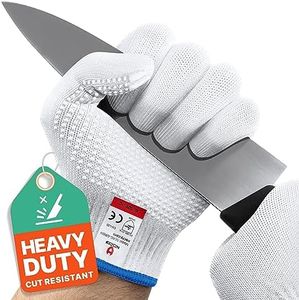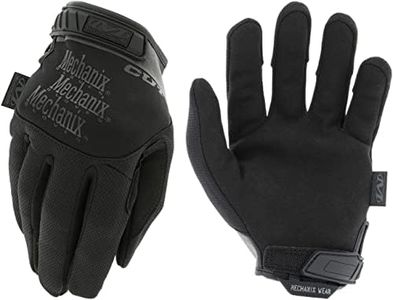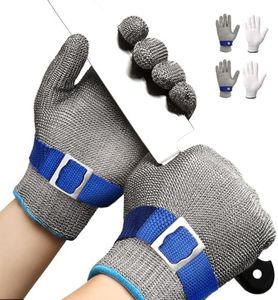We Use CookiesWe use cookies to enhance the security, performance,
functionality and for analytical and promotional activities. By continuing to browse this site you
are agreeing to our privacy policy
10 Best Cut-Proof Gloves
From leading brands and best sellers available on the web.Buying Guide for the Best Cut-Proof Gloves
Choosing the right cut-proof gloves is very important to ensure your hands are protected during tasks involving sharp objects like cooking, woodworking, metal handling, or glasswork. Not all gloves offer the same level of protection or comfort, so understanding the different features helps you select the pair that best matches your specific activities and safety needs.Cut Resistance LevelCut resistance level describes how well the glove can withstand being cut by sharp objects. This spec is typically rated on a scale (such as A1 to A9 in some standards or 1 to 5 in others), with lower numbers meaning less protection and higher numbers offering greater safety. For light kitchen tasks, a lower rating might be sufficient, while handling glass, heavy-duty work, or sharp tools demands a higher cut resistance level. Pick the level that matches the sharpness and danger of the materials you'll be working with.
MaterialThe material of cut-proof gloves significantly affects comfort, durability, and protection. Common materials include Kevlar, HPPE (High-Performance Polyethylene), and stainless steel mesh, each offering various balances of flexibility and resistance. Kevlar and HPPE are lightweight and good for general use, while steel mesh provides the highest protection but can be heavy and less flexible. Choose a material that's suitable for your work environment and comfort preferences, especially if you'll be wearing them for long periods.
Grip and DexterityGrip and dexterity refer to how easily you can move your fingers and maintain a firm hold on objects while wearing the gloves. Some gloves have textured or rubberized surfaces to help with grip, which is useful in wet or oily conditions. Higher cut resistance and thicker materials usually reduce dexterity, which can make detailed work harder. Consider how much finger movement you need and whether a better grip is essential for your tasks when choosing gloves.
Fit and ComfortFit and comfort determine how pleasant the gloves are to wear, especially for extended periods. A snug fit helps with control and reduces hand fatigue, but overly tight gloves can be uncomfortable, while loose gloves may slip and compromise safety. Look for gloves available in multiple sizes and shapes so you can find a pair that fits the shape and size of your hands. Pay attention to the lining, breathability, and overall feel to ensure you'll actually want to wear them.
Additional FeaturesAdditional features in cut-proof gloves can include waterproofing, heat resistance, or touchscreen compatibility. If your tasks involve exposure to water, high temperatures, or the need to use devices, these features might be crucial. Identify any extra challenges in your work and pick gloves with added features that address those risks or make your work more convenient and safe.
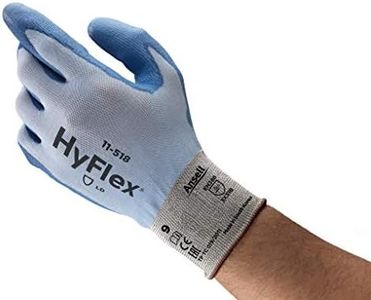
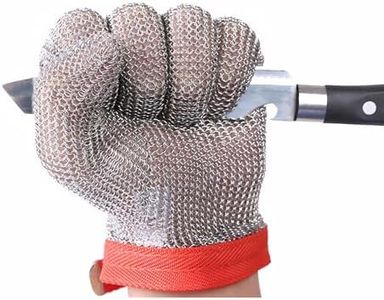
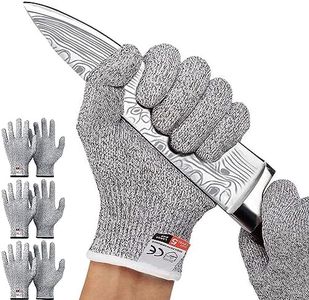
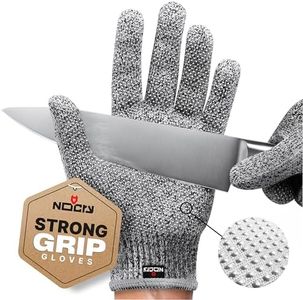
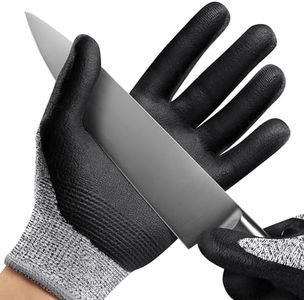
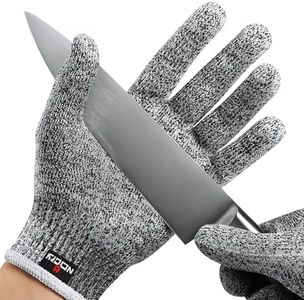
![[Upgrade] BYETOO 1Pair Cut Resistant Glove Food Grade Level 5 Protection,Safety Kitchen Cut Gloves for Oyster Shucking,Fish Fillet Processing,Mandolin Slicing,Meat Cutting and Wood Carving,Medium](https://images-proxy.bestreviews.guide/2pSevowb39MgLDuSUX-9NdvjZUg=/0x300/https://m.media-amazon.com/images/I/61wX-0TEhRL._AC_CX679_.jpg)
